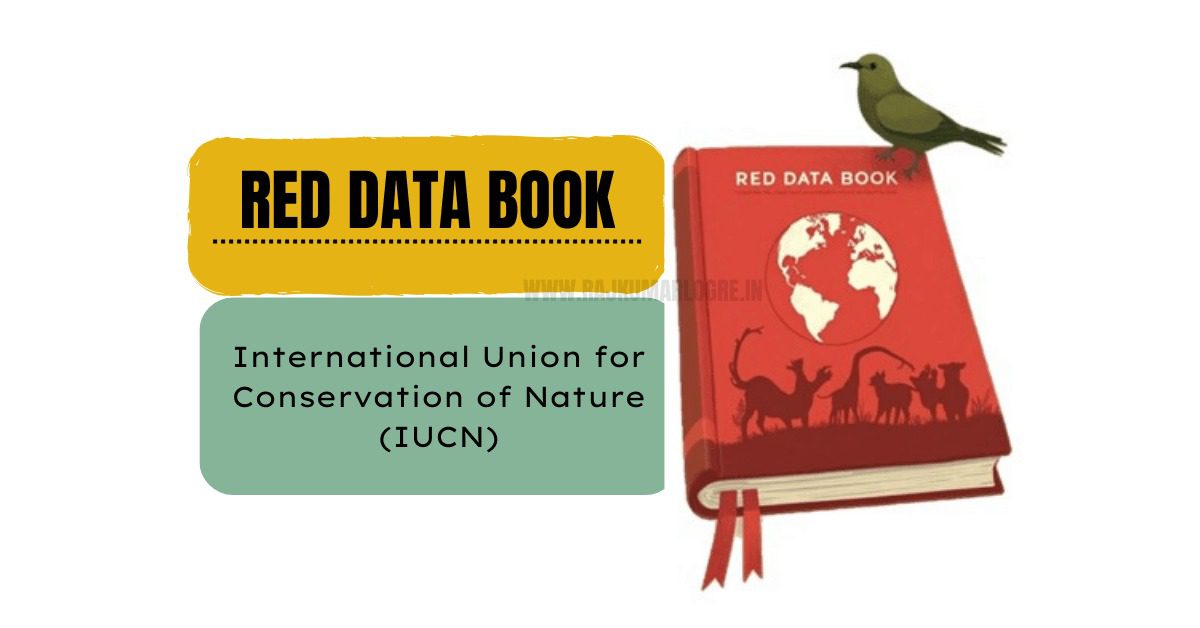Red Data Book

Red Data Book – A Vital Tool for Biodiversity Conservation
The Red Data Book is a crucial document that serves as a record of the conservation status of various plant and animal species. Published by the International Union for Conservation of Nature (IUCN), this document plays a fundamental role in environmental protection and biodiversity conservation efforts across the globe. It provides scientific data on species that are under threat and helps in monitoring changes in their populations over time.
The concept of the Red Data Book was initiated in the 1960s, and since then, it has become an authoritative global reference on the conservation status of species. It is an indispensable tool for scientists, conservationists, policymakers, and educators alike.
1. Key Features of the Red Data Book
The Red Data Book categorizes species based on the degree of risk they face regarding extinction. The IUCN has developed a clear system of classification using specific categories, each defined by strict criteria.
Categories of Species (IUCN Red List Categories):
- Extinct (EX):
These are species that no longer exist anywhere on Earth. An example includes the Dodo (Raphus cucullatus), which became extinct in the late 1600s. - Extinct in the Wild (EW):
Species that are only known to survive in captivity or artificial environments. For instance, the Spix’s Macaw (Cyanopsitta spixii), once extinct in the wild, now survives in captivity and is part of reintroduction programs. - Critically Endangered (CR):
Species facing an extremely high risk of extinction in the wild. One example is the Javan Rhino (Rhinoceros sondaicus), with fewer than 80 individuals left in the wild. - Endangered (EN):
These species are at a very high risk of extinction if conservation efforts are not applied. For example, the Tiger (Panthera tigris), though widespread in range, is considered endangered due to habitat loss and poaching. - Vulnerable (VU):
Species likely to become endangered unless the circumstances threatening their survival and reproduction improve. The Snow Leopard (Panthera uncia) falls into this category. - Near Threatened (NT):
Species that are close to qualifying for a threatened category in the near future. The Hippopotamus (Hippopotamus amphibius) is an example of a near-threatened species due to habitat degradation and illegal hunting. - Least Concern (LC):
These species are widespread and abundant. Examples include the House Sparrow (Passer domesticus) or Gray Wolf (Canis lupus), though some local populations may still face threats. - Data Deficient (DD):
This category includes species for which there is insufficient information to assess their risk of extinction. More research is needed to understand their status better.
2. Purpose and Objectives of the Red Data Book
The Red Data Book has several critical purposes, all centered around promoting the long-term survival of species and maintaining ecological balance:
- Identification of Threatened Species:
The primary aim is to identify species that are at risk of extinction. By categorizing them based on threat levels, conservationists can take targeted action. - Awareness and Education:
It helps raise awareness among the general public, students, and stakeholders about the urgency of species conservation. This awareness can lead to behavioral changes and increased support for conservation policies. - Scientific Research and Monitoring:
It provides a base for scientific research and environmental monitoring. Population trends of species over time can indicate the health of ecosystems. - Policy Formation:
Policymakers use this data to develop laws, regulations, and policies aimed at environmental protection and sustainable development. For example, species listed as Endangered or Critically Endangered may receive special legal protection. - Resource Allocation:
It helps governments and NGOs prioritize conservation funding and efforts based on the urgency of the threat.
3. Global and Regional Scope of the Red Data Book
The IUCN publishes the Global Red List, which assesses species from around the world. However, many countries also publish their own National Red Data Books or Regional Red Lists to focus on the conservation status of species within their territorial boundaries.
- India’s Red Data Book:
India maintains its own Red Data Book, particularly focused on endemic and endangered species found within the country. It includes species like the Great Indian Bustard, Lion-tailed Macaque, and Nilgiri Tahr. - Example from the UK:
The UK maintains a Red List of Birds, which identifies native birds that are declining due to urbanization and climate change, such as the Skylark and Cuckoo.
This regional approach allows for better monitoring and management, especially in biodiversity hotspots where the concentration of unique species is very high.
4. Significance of the Red Data Book
The Red Data Book is more than just a list. It is a living document with immense ecological, scientific, and social importance:
- Environmental Indicator:
The Red Data Book acts as a key indicator of the environmental health of a region. An increase in the number of threatened species is often a sign of environmental degradation, such as deforestation, pollution, or climate change. - Legal Protection and Conservation Action:
Species listed in the Red Data Book often become the focus of legal protection under international conventions like CITES (Convention on International Trade in Endangered Species) or national laws like the Wildlife Protection Act (1972) in India. - Ecological Balance:
Every species, no matter how small, plays a role in maintaining ecological balance. Loss of species can lead to the collapse of food chains and disruption of natural processes like pollination and seed dispersal. - Cultural and Economic Value:
Many species have deep cultural significance and economic value. For example, medicinal plants, wildlife tourism, and agriculture rely heavily on the diversity and survival of species listed in the Red Data Book.
5. Conservation Success Stories Linked to Red Data Book Listings
Being listed in the Red Data Book often acts as a catalyst for conservation programs, and several species have made partial or full recoveries due to timely interventions:
- The Bald Eagle (USA):
Once on the brink of extinction due to DDT pesticide use, legal protection and habitat restoration helped the Bald Eagle populations bounce back. It was removed from the endangered species list in 2007. - The Indian Rhino:
Due to intense anti-poaching efforts and habitat protection, the population of the Indian Rhinoceros in Kaziranga National Park has shown significant growth over the years.
These examples demonstrate the positive impact of early identification and conservation action inspired by Red Data Book data.
6. Challenges and Limitations
Despite its importance, the Red Data Book faces some limitations:
- Data Deficiency:
Many species remain unassessed due to lack of data, especially in remote or under-studied ecosystems like deep oceans and tropical forests. - Rapid Environmental Changes:
Habitat loss and climate change are progressing at such a fast pace that species status can shift quickly, making timely updates essential. - Implementation Gaps:
While being listed in the Red Data Book increases awareness, actual implementation of protective measures often lags behind due to political, economic, or logistical challenges.
Read Also: What is Biodiversity? Types, Importance, and Causes
7. Conclusion
The Red Data Book is an essential scientific document that has revolutionized how we understand and protect the Earth’s biodiversity. By identifying species at risk and categorizing them with clear criteria, it lays the groundwork for effective conservation strategies. Whether it’s preventing extinction, guiding environmental policies, or educating the public, the Red Data Book plays a central role in preserving life on Earth.







One thought on “Red Data Book”